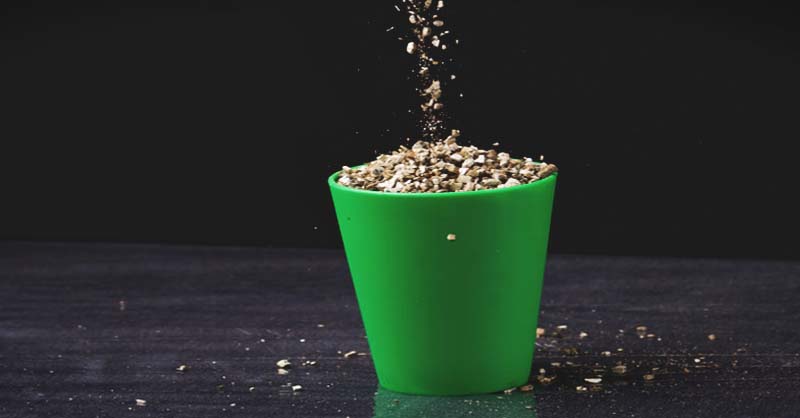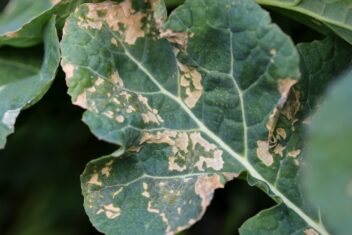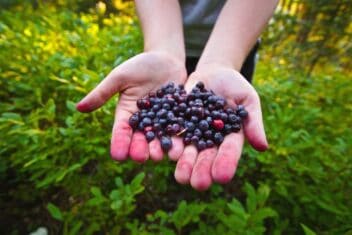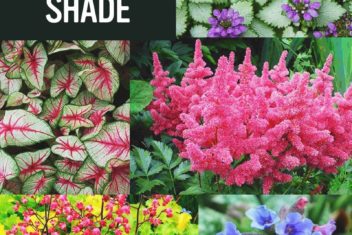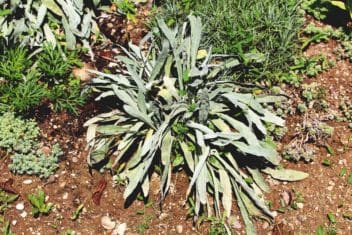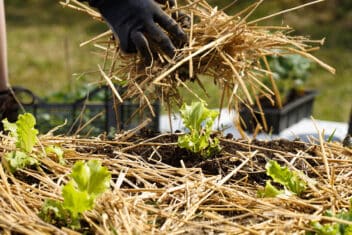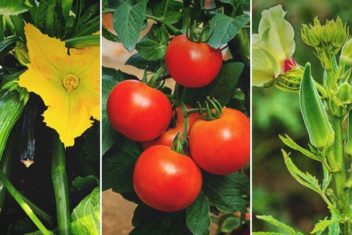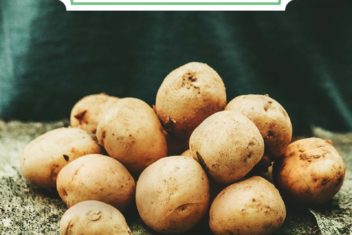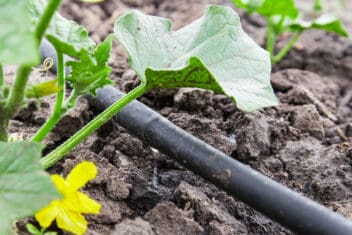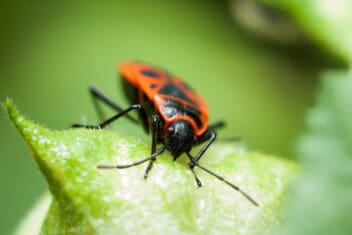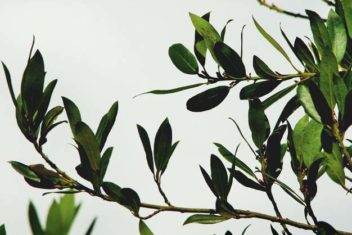Are you trying to decide between vermiculite vs. perlite? Maybe you know that one of them looks like tiny Styrofoam balls while the other resembles attic insulation. Perhaps you’re aware that both help influence soil retention, but you’re confused about which is right for your needs.
You can’t use the two interchangeably. There are important differences between perlite and vermiculite, and to make your garden flourish, you need to understand which is better for your particular needs.
If you’re looking for a quick answer, the bottom line is that vermiculite mixes into the soil to help you retain water. Perlite, on the other hand, adds drainage to the soil it’s mixed with. There’s much more to it than that, though, so read on for all the essential details.
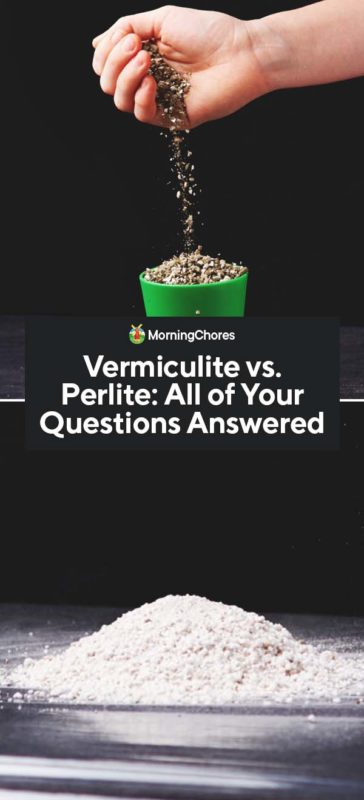
What is Vermiculite?
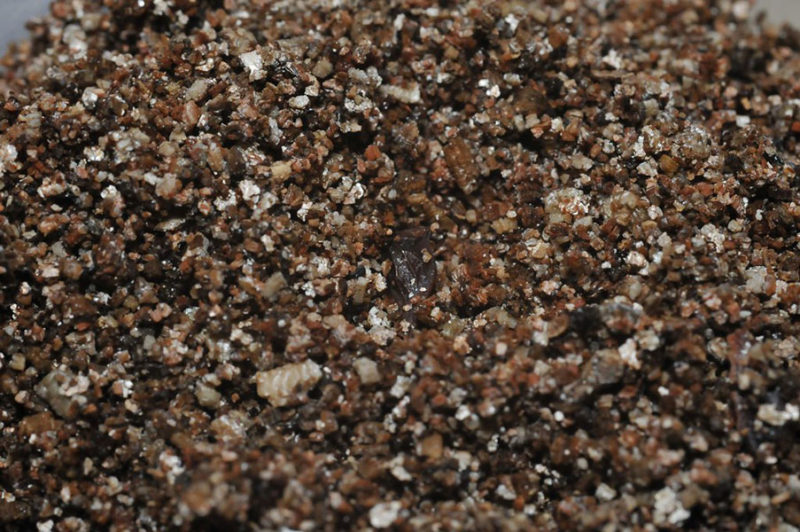
Vermiculite is made of compressed silicate material derived from mined rocks that looks like dry flakes. Vermiculite is heated to a high temperature of 1600℉. The resulting flakes are absorptive and spongy with a golden brown to dark brown color. Some varieties are yellow, gold or copper.
Vermiculite interacts with the potassium, calcium, and magnesium in the soil. It also can raise the pH level of your plants, even though vermiculite has a pH of 7.0.
When you add water to vermiculite, the flakes grow and expand, resembling a worm-like shape that absorbs like a sponge. If you’re planting something that loves water, you can add a scoop of vermiculite to your potting soil. Your plants will be in heaven because vermiculite absorbs 3-4 times its volume!
Vermiculite is a permanent soil conditioner. That means, unlike compost, it doesn’t break down in your soil. When you add water, or it rains, vermiculite will continue to hold water in the soil until the soil dries out.
Now for the bad news. Vermiculite is a non-renewable resource. It’s also mined, so it’s not what you’d call environmentally friendly.
6 Ways to Use Vermiculite
Wondering how to use vermiculite in your garden? Here are some ideas.
- Use it in potting containers, lawns, or in composts to retain moisture.
- Add it to mushroom growing substrate.
- Incorporate it into the soil to make it less dense.
- Use it as a cover layer to help seeds germinate.
- Help cuttings retain moisture and plant foods by adding it to the soil.
- When combined with peat moss or compost, it helps to encourage faster root growth, providing better stability for young roots.
What is Perlite?

Perlite starts as volcanic glass that is formed when obsidian contacts water. This process creates a type of volcanic glass with high water content. Perlite is then heated up to 1600℉, at which point it pops like a corn kernel, expanding thirteen times its original size.
Perlite is lightweight, easy to handle, and odorless. It has pH level of 6.6 to 7.5. Per cubic foot, finished perlite only weighs around six to seven pounds.
Perlite allows excess water to drain quickly because it’s porous. It’s so porous that you can crush into a powder with your fingers, but you typically don’t have that type of pressure in garden beds or pots. Perlite improves soil aeration, lightens the soil by improving drainage, and provides more access to oxygen for plants’ roots.
The downside to perlite is that the dust is considered a “nuisance dust,” so it can irritate lungs and throats and exacerbate existing respiratory conditions. Use eye and mouth protection when you work with it. It’s also mined using destructive methods and it’s a non-renewable resource.
5 Ways to Use Perlite
What are some ways that you can use perlite? Here are a few useful ways to tap into its properties.
- Eliminate surface crusting and puddles in clay soils.
- Maintain a steady soil temperature.
- Improve drainage.
- Allow more oxygen flow into the soil.
- Ideal for growing cactus and succulents.
The Similarities Between Vermiculite and Perlite
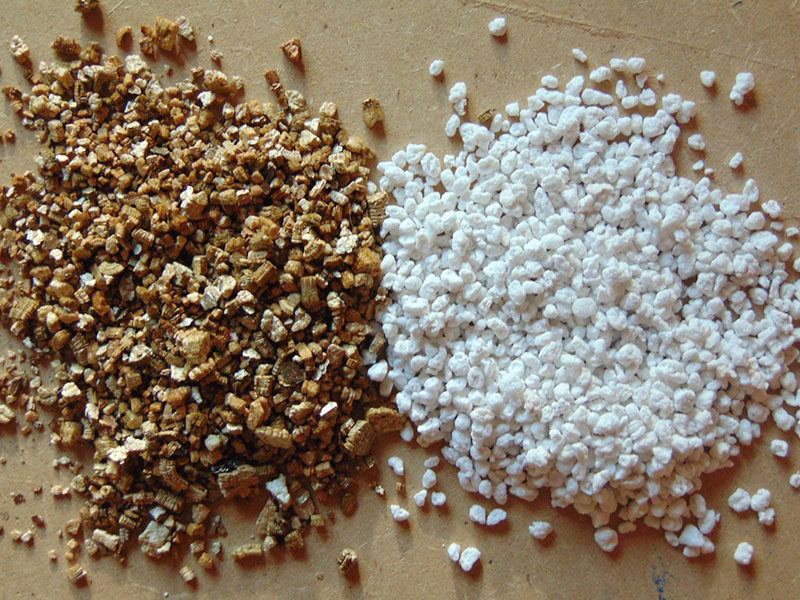
Before we look at how these two minerals are different, let’s consider the similarities of vermiculite vs perlite.
Both of these amendments are mined minerals that can be used for insulation and water filtration. They can both hold moisture and improve drainage in soils.
While both perlite and vermiculite hold water, they work in different ways. Vermiculite is flat and holds its water like a sponge. Think about how a dry sponge plumps up when you pour water over the top of it; that’s vermiculite.
Perlite, on the other hand, is round and holds its water like a little cavern structure. Those small balls have all kinds of nooks and crannies that suck up water.
The Differences Between Vermiculite and Perlite
There are some significant differences when it comes to vermiculite vs perlite, so you have to pick the right one for your needs. Ready to learn what those differences are? Let’s break them down.
Drainage
Vermiculite mixes with the soil and helps to retain water. On the other hand, perlite adds drainage to the soil to reduce how much water is in the soil.
Remember that both of these amendments can hold water, but they do so differently. Many gardeners prefer perlite because those little white balls help the soil to drain faster and better than vermiculite.
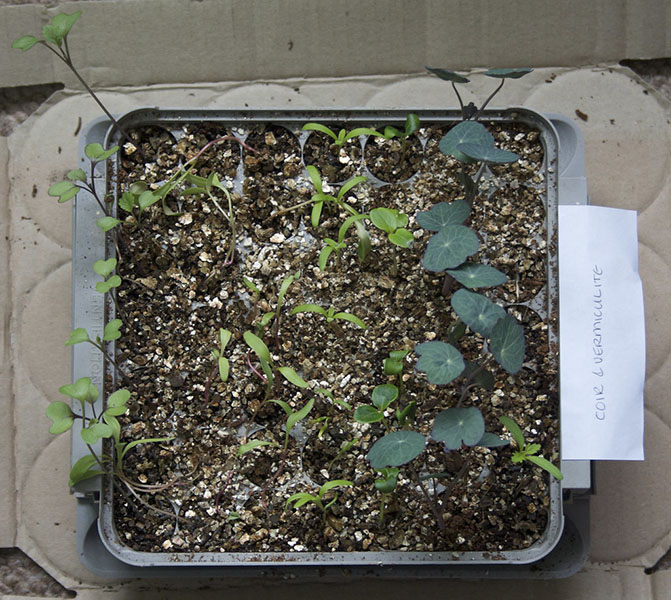
Gardeners often added vermiculite to seed starting mixtures because it protects seedlings from fungus, which kills new seedlings. It helps to retain water in those tiny little pods that gardeners use to start seeds. On the other hand, while perlite can be used to help start seedlings, it’s better used when you move those seedlings into larger pots in order to help with additional drainage.
pH
Perlite has an alkaline pH level between 7.0 and 7.5. If you use perlite in excess, it can cause minor nutrient issues. Vermiculite has a pH level between 6.5 and 7.2, making it a more neutral additive and therefore better for some plants.
Longevity
Unlike vermiculite, perlite is considered permanent because it doesn’t deteriorate. It’s clean, odorless, non-toxic, sterile, and will never mold or rot.
Aeration
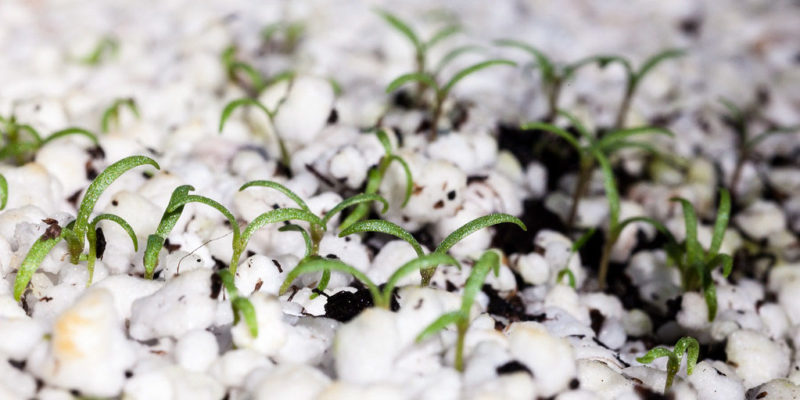
Vermiculite is a poor soil aerator because it absorbs so much more water. Not ideal for some plants because it might cause root rot in plants that don’t like wet roots. Perlite enhances aeration by releasing excess amounts of water.
Water Retention
Vermiculite retains a lot of water, expanding up to 3-4 times its size when saturated. Perlite improves water retention while increasing drainage. It also raises the humidity level around plants.
That said, perlite lets water drain too quickly, so not ideal for seeds or seedlings that need damp soil.
Vermiculite vs. Perlite: When to Pick Each One
So, now that you know the similarities and differences of vermiculite vs. perlite, how do you know when to pick either one? Remember that each serves a purpose in the garden, so one isn’t necessarily bad. It’s just a matter of assessing your goals and needs.
Use Perlite When:
- You have plants that need to dry out in between waterings.
- When you move your seedlings to separate pots.
- You need to loosen up clay soil in your garden.
- Your garden soil is too acidic, and you want to bring the pH level close to an alkaline level.
- If you live in a rainy area where you need the soil to dry out
Use Vermiculite When:
- You have plants that need to be kept moist.
- You have seed trays that you want to develop into vigorous seedlings.
- If you live in a dry climate to help your soil retain moisture
Which is Better for Hydroponics: Vermiculite vs. Perlite?
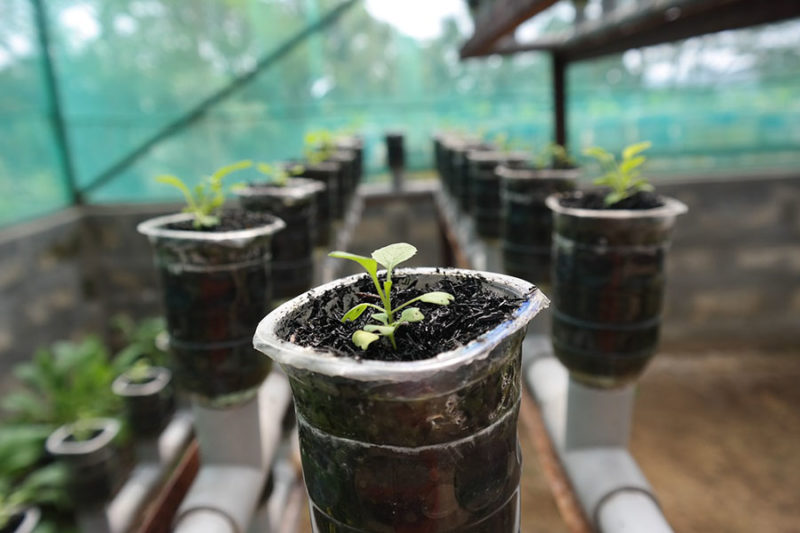
Both perlite and vermiculite have been used in the world of hydroponics for years because they are a great compliment to each other. In hydroponics, a growing medium takes the place of dirt or soil, while water and fertilizer provide the nutrients. The growing medium helps support the weight of the plants, holding them securely in the water.
Perlite is rarely used as the sole growing medium in hydroponics because it’s incredibly lightweight. Water flows around the growing medium, and perlite isn’t able to stand up against the movement.
Vermiculite alone doesn’t work well, either, because it retains so much water. If you used only vermiculite, it would keep all of the water and cause your plant’s roots to rot.
Instead, most hydroponic gardeners use a mixture of the two. A 50-50 ratio is an excellent place to start, and you’ll want to use the large grade perlite. Pick either size #3 or #4.
Vermiculite and perlite work well together for hydroponics. Vermiculite retains moisture while perlite does not. So, by using a 50-50 ratio mixture, it creates an ebb and flow type of system.
A 50-50 mixture will hold some, but not all, of the water. It will retain some of the nutrients, supplying the roots with the food necessary to grow as well as plenty of oxygen.
What to Remember about Vermiculite vs. Perlite
Remember that both perlite and vermiculite can improve your soil conditions, but they do so in different ways. Perlite can help water drain out of your soil, while vermiculite retains the water. You can pick which medium you want to use based on the unique needs of the plants that you’re growing.
Both perlite and vermiculite are used in the hydroponic gardening world to create a soil-less medium to hold the roots in the water.
Remember that these amendments are not interchangeable. Each performs a different yet important function. Understanding these differences allows you to help your plants flourish.

